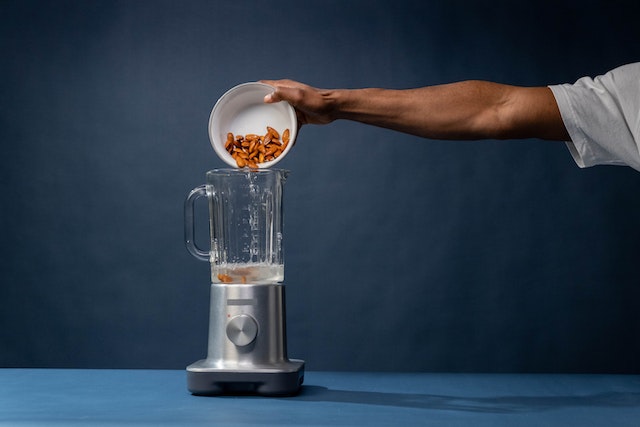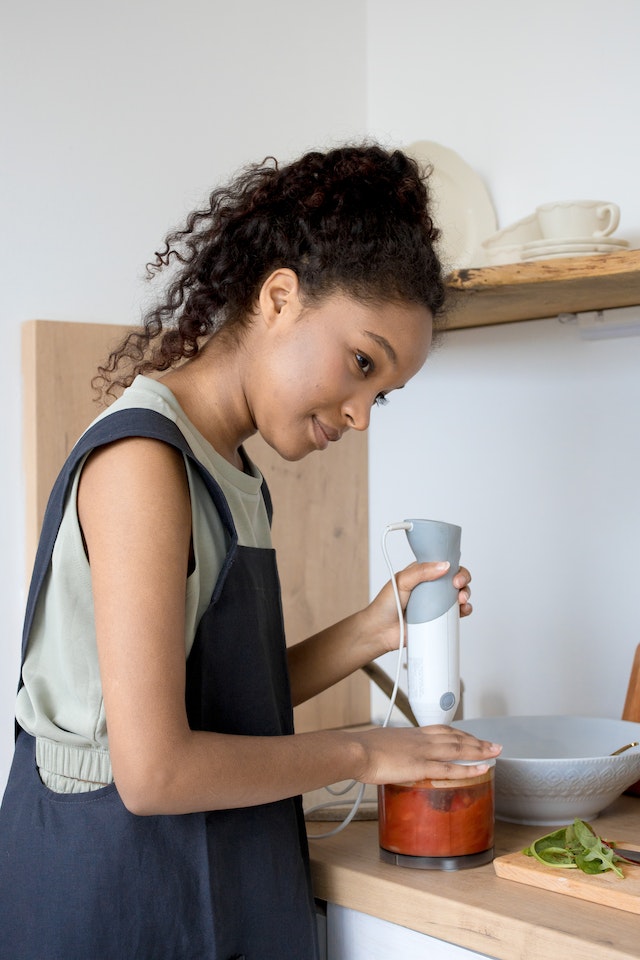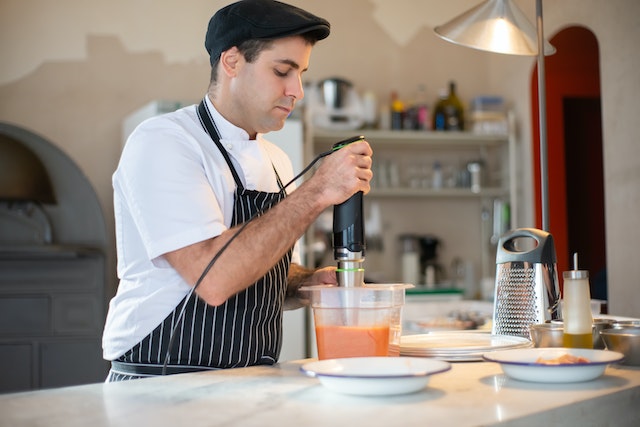
As a versatile kitchen tool, blenders have revolutionized meal preparation in countless households around the world. From blitzing smoothies to pureeing soups, blenders are the go-to appliance for anyone looking to create exceptional textures in their meals.
There are several different types of blenders available on the market, each with its unique features and functionalities. From high-speed blenders perfect for smoothie making to immersion blenders great for blending hot liquids, there’s a blender to suit every need.
The benefits of using blenders in meal preparation are endless, from saving time and effort to creating healthier, more nutritionally dense meals. Plus, with the ability to create delicious recipes, such as creamy soups and dip, blenders add endless possibilities to what one can make in the kitchen. With their ease of use and the ability to blend various foods in seconds, blenders have cemented their place as an essential kitchen tool for anyone looking to create deliciously healthy meals that the whole family will love.
Types of Blenders
High-Speed Blenders
These blenders are designed to cater to the most demanding blending needs and are perfect for making smoothies, nut butter, and frozen drinks. Some common features include:
- High-powered motors
- Large blending jars
- Multiple speed settings
- Durable blades
Some advantages of using high-speed blenders include:
- The ability to blend tough ingredients like tough vegetables and nuts.
- Smooth and consistent blend texture
- Easy to use and clean
On the downside, high-speed blenders can be noisy and expensive.
Things to consider when buying a high-speed blender
- Motor power: Opt for a blender with a motor that has at least 1000 watts
- Jar capacity: Get a blender with a 64-ounce capacity jar or more
- Blade quality: Choose blades made from durable materials like stainless steel
Immersion Blenders

These are handheld blenders with blades attached to one end. Immersion blenders are perfect for blending soups, sauces, and dressings directly in the pot without transferring to a separate blender.
Common features include:
- Compact design
- Multiple speed settings
- Detachable blending arm for easy cleaning
Some advantages of using immersion blenders include:
- Easy to use and clean
- Space-saving design
- Can blend hot liquids
On the downside, immersion blenders are not suitable for tough blending tasks like nuts and frozen fruits.
Things to consider when buying an immersion blender:
- Motor power: Choose a blender with at least 200 watts
- Blade quality: Look for blades made from stainless steel
- Ease of cleaning: Choose a blender with detachable parts for easy cleaning
Personal Blenders
These are compact blenders designed for one-serving smoothies and shakes. Personal blenders are perfect for individuals who want to make smoothies on the go. Common features include:
- Compact design
- Multiple blending cups
- Easy to use
Some advantages of using personal blenders include:
- Saves time and effort
- Easy to use and clean
- Space-saving design
On the downside, personal blenders have small blending jars and are not suitable for large batches.
Things to consider when buying a personal blender:
- Motor power: Choose a blender with at least 250 watts
- Cup size: Look for a blender with multiple cup sizes
- Ease of cleaning: Choose a blender with detachable parts for easy cleaning
Blender Functions and Features
Blenders have become an essential kitchen tool for people who love spending time in the kitchen and creating delicious meals. However, with so many different types of blenders available on the market, it can be challenging to choose the right one for your needs.
Here are some important blender features and functions that you should consider when choosing the right blender for your kitchen.
Motor Power and Speed Settings
Motor power and speed settings are crucial factors to consider when choosing a blender. The motor power determines how fast the blender can blend and how well it can handle tough ingredients like ice and frozen fruits.
High-power blenders typically have motors with 1000 watts or more, while lower-powered blenders have motors with 300 to 500 watts. A high-powered blender can blend tough ingredients quickly and efficiently but can be more expensive.

Speed settings on a blender can be variable or pre-set. Variable speed blenders allow for more precise control over the speed, which is especially important when blending tougher ingredients. Pre-set speed blenders, on the other hand, have specific speed settings for different types of blending tasks like crushing ice or blending smoothies.
Blade Types and Materials
Blender blades are critical components that determine how well the blender blends and how long they last. The blades should be sharp, durable, and made of high-quality materials.
Most blender blades are made of stainless steel, but some blenders have diamond-coated blades that can last longer. Some blender blades are also designed to be removable or interchangeable, allowing for more customization and versatility.
Container Size and Material
The blender container size and material are important to consider, depending on the types of recipes you plan to make. Blender containers can range from 32 ounces to 72 ounces or more, and the material can be glass, plastic, or stainless steel.
Glass containers are the most durable and can handle hot and cold liquids without cracking or breaking. Plastic containers are more lightweight and affordable but can scratch and crack over time. Stainless steel containers are durable and can handle hot liquids but are inflexible and can be heavier.
Special Features and Attachments
Blenders can come with special features and attachments that offer additional functionality and versatility. Some features and attachments to look out for include:
Pulse Function: This feature allows for more precise control over the blending process.
Timer: A blender with a timer allows you to set the blending time and walk away.
Auto shut-off: This feature shuts off the blender when it senses the contents are at a desired consistency.
Tamper: A tamper is a tool that helps to push ingredients down to the blade for a smoother blend.
Ice crushing ability: A blender with ice crushing ability can handle tough ingredients like ice and frozen fruits.
Juicing attachments: A blender with a juicing attachment can juice fruits and vegetables, making it a versatile tool in the kitchen.
Common Uses for Blenders
Blenders are incredibly versatile kitchen appliances that can be used for a wide variety of tasks. Here are some common uses for blenders that highlight their usefulness:
Smoothies and Beverages
Blenders are perfect for creating the smoothest of smoothies and other refreshing beverages, such as milkshakes, protein shakes, and even frozen cocktails. With its powerful motor and sharp blades, a blender can break down even the toughest of ingredients, including ice and frozen fruits, creating a smooth and creamy drink. Simply mix together your favorite fruits, yogurt, milk, ice, and honey, and within a minute, you have a delicious smoothie to enjoy.

Soups and Sauces
Blenders are the perfect tool for creating velvety smooth soups and sauces. By pureeing your ingredients in a blender, you can create a restaurant-quality texture, breaking down vegetables and other ingredients into a fine, silky consistency. Whether it’s a creamy tomato soup or a flavorful pesto sauce, blenders make it easy to whip up a soup or sauce in no time.
Dips, Spreads, and Dressings
Blenders are also fantastic for creating tasty dips, spreads, and dressings. Whether you want to make a delicious guacamole or hummus, a blender can quickly and easily blend everything together, creating a smooth and even texture. Similarly, when it comes to creating dressings for salads or pasta dishes, a blender can emulsify your ingredients, creating a creamy, well-blended dressing.
Nut Butters and Nut Milks
For those who love nut butters and milks, a blender is an essential tool. Whether you prefer almond, peanut, or cashew butter, a blender can quickly and easily grind up your favorite nuts into a smooth and creamy spread. Similarly, if you’re a fan of homemade almond milk or other nut-based milks, a blender can help you make it in a snap.
Crushing and Grinding
Blenders are also great for crushing and grinding various ingredients. Whether it’s crushing ice for a cocktail or grinding coffee beans for a fresh cup of coffee, a blender can handle even the toughest ingredients. In addition, blenders can be used to grind spices into a fine powder, which is perfect for enhancing the flavor of your dishes.
Tips for Using Blenders Effectively
Proper Assembly and Safety Measures
- Always read the user manual before using your blender to ensure that you assemble it correctly for safe use.
- Ensure that the blender jar is properly secured to the base before you start blending.
- Make sure that the blades are clean, sharp and firmly attached before each use. This will help to prevent accidents and ensure that the blender works efficiently.
- Ensure that the blender is placed on a sturdy and level surface before you begin blending.
Blending Techniques and Texture Control

- To achieve a smooth and consistent texture when blending, add the liquid ingredients first, followed by the softer ingredients and then the harder ones.
2. Use the pulse function to achieve a more precise texture when blending. This enables you to control the length of blending time, thereby avoiding over-blending.
3. Blend in small batches for optimal blending. This will help you to achieve a smoother and more consistent texture when blending.
4. Use the tamper tool to push ingredients down towards the blades while blending. This helps to ensure that all ingredients are blended evenly.
Cleaning and Maintenance
- Always unplug the blender from the power supply before cleaning to avoid any accidents.
- Immediately after blending, remember to disassemble and clean the blender components to avoid any food or liquid residue from drying or sticking to the blades or jar walls.
- Use warm soapy water to wash the blender jar, blades, and lid. Rinse them thoroughly with clean water and dry them before reassembling the components.
- Some blenders come with cleaning self-cleaning options, which makes cleaning easier and more effective. Read the manual to know whether your blender has a self-cleaning function.
- When the blender is not in use, ensure you store it in a dry, cool and safe environment to ensure its longevity.
With these tips and techniques, you will be able to use your blender effectively and achieve the desired blend texture depending on the ingredients used. Also, by taking proper care of your blender, you will increase its lifespan, maintain its functionality, and achieve the safety required in the kitchen.
Blenders are an essential tool to have in any kitchen. Whether you’re looking to make healthy smoothies, creamy soups, or nut butter, blenders can handle it all. When choosing the right blender, consider features like motor power and blade quality, as well as extra features and attachments that can increase versatility. With a quality blender, you can take your meal preparation to the next level and create delicious, nutritious meals that the whole family will love.
